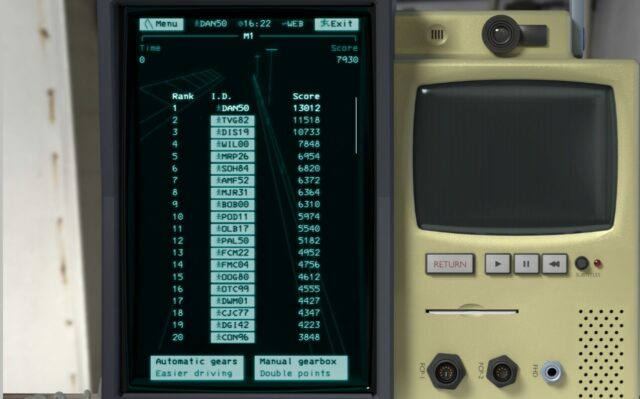In the late ’70s, a shadowy group of British technologists concluded that nuclear war was inevitable and secretly started work on a cutting-edge system designed to help rebuild society. And thanks to Matt Round-and-friends at vole.wtf (who I might have mentioned before), the system they created – ARCC – can now be emulated in your browser.
I’ve been playing with it on-and-off all year, and I’ve (finally) managed to finish exploring pretty-much everything the platform currently has to offer, which makes it pretty damn good value for money for the £6.52 I paid for my ticket (the price started at £2.56 and increases by 2p for every ticket sold). But you can get it cheaper than I did if you score 25+ on one of the emulated games.

Most of what I just told you is true. Everything… except the premise. There never was a secretive cabal of engineers who made this whackballs computer system. What vole.wtf emulates is an imaginary system, and playing with that system is like stepping into a bizarre alternate timeline or a weird world. Over several separate days of visits you’ll explore more and more of a beautifully-realised fiction that draws from retrocomputing, Cold War fearmongering, early multi-user networks with dumb terminal interfaces, and aesthetics that straddle the tripoint between VHS, Teletext, and BBS systems. Oh yeah, and it’s also a lot like being in a cult.
Needless to say, therefore, it presses all the right buttons for me.

DAN50.
If you enjoy any of those things, maybe you’d like this too. I can’t begin to explain the amount of work that’s gone into it. If you’re looking for anything more-specific in a recommendation, suffice to say: this is a piece of art worth seeing.